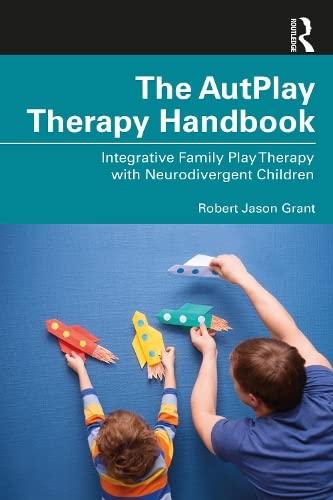Macy was 9 years old when I first met her. She was sitting with her mother in my office. It was their first session to see me, her mother was bringing her to therapy to help with regulation needs. Macy was autistic and gifted. She was being home schooled due to regulation struggles in the mainstream school. Macy would regularly crawl under desks and refuse to come out. Her mother described her regulation struggles to be frequent and lasted for long periods of time. Macy struggled with becoming dysregulated in most events she nav- igated including in her own home. She currently stayed mostly at home, did not participate in any activities outside the home, and rarely left the house to complete errands with her mother. Sitting in my office in this first session it was clear Macy felt uncomfortable. I could see her anxiety and a child who was likely “one more thing” away from a dysregulated meltdown. Luckily this was not my first experience with a child such as Macy. I knew the process would be vital and that process must be supportive, affirming, and focused on building relationship with Macy that nurtured safety and familiarity. I also knew the therapeutic key to help- ing Macy existed in the transformative process I had seen over and over again from child to child – the child’s own natural language of play. The AutPlay Therapy framework was on full display in my time working with Macy. There was a central focus on building relationship, identifying and valuing her play preference of movement play which greatly helped reg- ulate her system, assessing her strengths, discovering her talents with humor, and providing her space to shine in her strength at each play therapy session. It was also important to include her mother in the therapy process and the three of us working together as partners to help Macy improve her regulation needs, value her identity as a neurodivergent child, improve her self-worth,
چکیده فارسی
میسی 9 ساله بود که برای اولین بار او را دیدم. او با مادرش در دفتر من نشسته بود. اولین جلسه آنها بود که من را می دیدند، مادرش او را برای کمک به نیازهای تنظیمی به درمان می آورد. میسی اوتیستیک و با استعداد بود. او به دلیل مشکلات مربوط به مقررات در مدرسه معمولی در خانه تحصیل می کرد. میسی مرتباً زیر میز می خزد و از بیرون آمدن امتناع می کرد. مادرش توضیح داد که تلاشهای او برای تنظیم مکرر بوده و برای مدت طولانی ادامه داشته است. میسی در بیشتر رویدادهایی که از جمله در خانه خود انجام می داد، با بی نظمی مواجه بود. او در حال حاضر بیشتر در خانه می ماند، در هیچ فعالیتی خارج از خانه شرکت نمی کرد و به ندرت خانه را ترک می کرد تا با مادرش کارهایش را انجام دهد. وقتی در دفتر من در اولین جلسه نشستم، واضح بود که میسی احساس ناراحتی می کرد. میتوانستم اضطراب او و کودکی را ببینم که احتمالاً «یک چیز دیگر» از یک فروپاشی بینظم دور بود. خوشبختانه این اولین تجربه من با کودکی مانند میسی نبود. میدانستم که این فرآیند حیاتی خواهد بود و این فرآیند باید حمایتکننده، تأییدکننده و متمرکز بر ایجاد رابطه با میسی باشد که ایمنی و آشنایی را تقویت میکند. همچنین میدانستم که کلید درمانی کمک به میسی در فرآیند تحولی که بارها و بارها از کودکی به کودک دیگر دیده بودم وجود دارد - زبان طبیعی بازی خود کودک. چارچوب AutPlay Therapy در زمان کار من با میسی کاملاً نمایش داده شد. تمرکز اصلی بر ایجاد رابطه، شناسایی و ارزش گذاری ترجیح بازی او برای بازی حرکتی بود که کمک زیادی به تنظیم سیستم او، ارزیابی نقاط قوت او، کشف استعدادهای او با شوخ طبعی، و فراهم کردن فضایی برای درخشش قدرتش در هر بازی درمانی داشت. جلسه همچنین مهم بود که مادرش را در فرآیند درمان مشارکت دهیم و ما سه نفر به عنوان شریک با هم کار کنیم تا به میسی کمک کنیم تا نیازهای تنظیمی خود را بهبود بخشد، هویت او را به عنوان یک کودک عصبی واگرا ارزش قائل شود، ارزش خود را افزایش دهد،
ادامه ...
بستن ...
Author(s): Robert Jason Grant
Publisher: Routledge, Year: 2022
ISBN: 1032075481,9781032075488
ادامه ...
بستن ...










